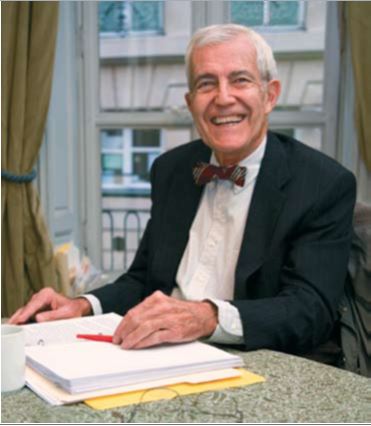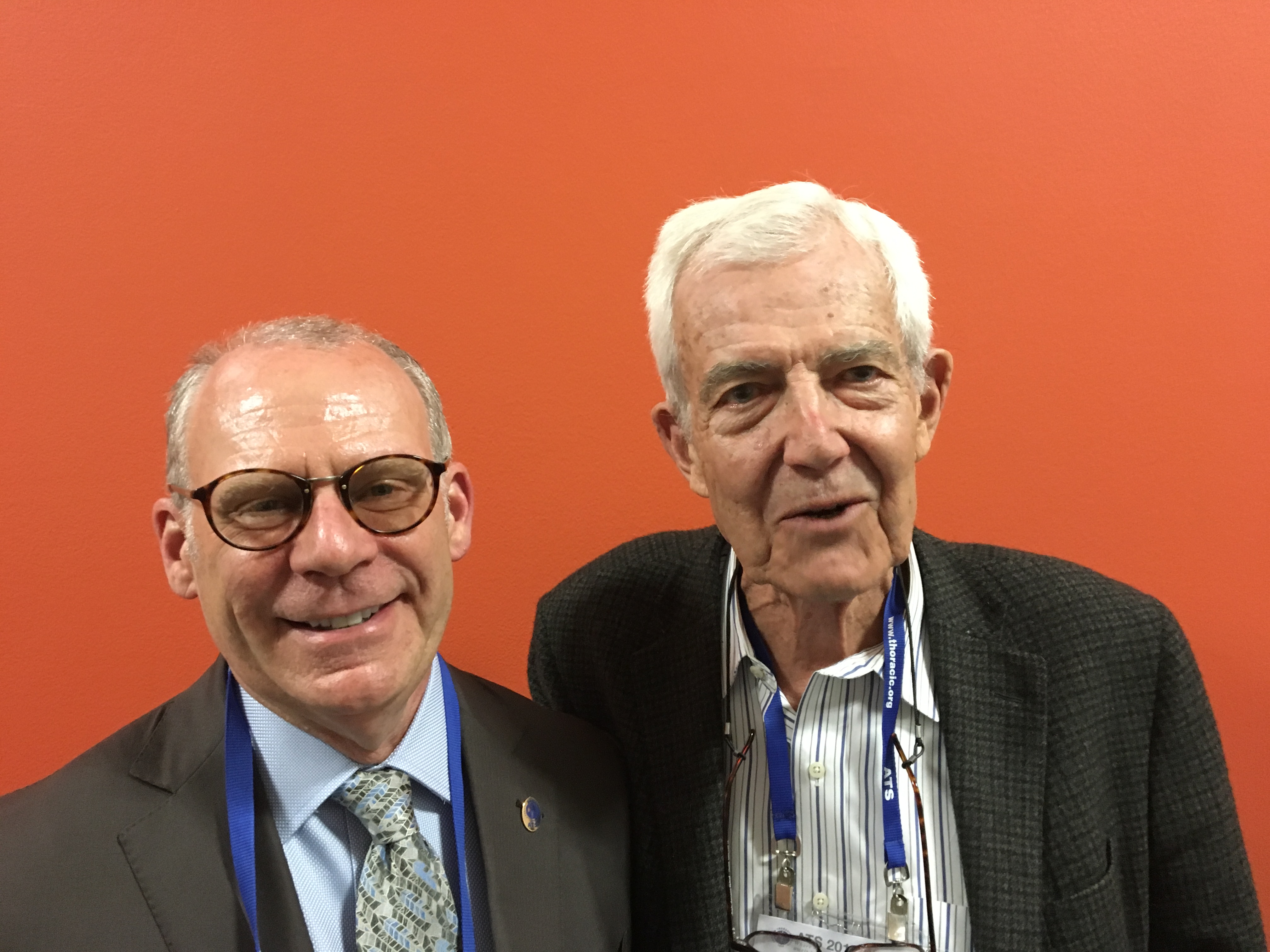On March 24, 2020, John F. Murray, MD, and past president of the ATS, passed away at the age of 93. He was a member of the ATS community for 60 years.
Dr. Murray had an immense impact on the field of pulmonary medicine locally, nationally and internationally. He was dedicated to San Francisco General Hospital (SFGH), where he was chief of pulmonary for 23 years, from1966  to1989. Arriving as SFGH was integrating into the UCSF training programs, he was a key figure in implementing the integration. In addition, he served as chief of the medical staff at SFGH and developed the first professional fee billing system for the hospital. He also conducted a successful research program, focused mainly on the pathogenesis and treatment of ARDS. He was highly regarded by trainees at all levels for his teaching of clinical respiratory physiology, usually focused on a particular patient case in the ICU. Long after retiring in1994, he continued to serve as an attending physician in the MICU, teaching and inspiring future physicians to love clear thinking, and concern for the patient above all.
to1989. Arriving as SFGH was integrating into the UCSF training programs, he was a key figure in implementing the integration. In addition, he served as chief of the medical staff at SFGH and developed the first professional fee billing system for the hospital. He also conducted a successful research program, focused mainly on the pathogenesis and treatment of ARDS. He was highly regarded by trainees at all levels for his teaching of clinical respiratory physiology, usually focused on a particular patient case in the ICU. Long after retiring in1994, he continued to serve as an attending physician in the MICU, teaching and inspiring future physicians to love clear thinking, and concern for the patient above all.
Nationally, Dr. Murray has left indelible marks on the clinical practice of pulmonary medicine, the process of selecting and training fellows in pulmonary disease, and on lung disease research. Moreover, he played an instrumental role in the evolution of the American Thoracic Society into the strong, internationally respected professional society it is today.
Among Dr. Murray’s achievements was the addition of ‘lung’ to the, at the time, National Heart Institute. Although the National Heart Institute was created in 1948, it was not until 20 years later, through an intensive lobbying campaign led by Dr. Murray, and his colleagues at UCSF, that a lung institute was given equal billing with the heart institute, forming the National Heart and Lung Institute, or as we know it today, the National Heart, Lung, and Blood Institute (NHLBI).
In the early 1970s, Dr. Murray also led a committee of prominent pulmonologists charged with assessing the size of the workforce in pulmonary medicine and projecting future pulmonary workforce needs. The group forecast a substantial deficit in pulmonary specialists in the near future, and their report prompted the creation of training programs as well as increased funding to support the training. Recognizing that additional academic faculty was needed to staff the increasing training needs, Dr. Murray was also instrumental in the creation of the National Pulmonary Faculty Training Program, funded by the Division of Lung Disease in the NHLBI.
To standardize the process of trainee selection, Dr Murray catalyzed the creation of the Western Uniform Acceptance Date program, involving four western training programs. Other institutions subsequently joined, and the program became the pulmonary matching program, the first subspecialty matching program in the country.
Specialty training in the early 1970s was an ad hoc affair. The content of training programs was largely open to program directors’ discretion. Dr Murray led a group of clinical training program directors in developing and publishing the first guidelines for pulmonary training programs, “Attributes of the Subspecialist in Internal Medicine and Guidelines for Training in Pulmonary Diseases.”
Dr. Murray was also involved in research, and assumed the editorship of the American Thoracic Society’s journal, the American Review of Respiratory Disease, in 1974. During his editorship, Dr. Murray took a leading role with the International Committee of Medical Journal Editors where he chaired a committee to develop unified requirements for manuscripts. This meeting led to the establishment of the Uniform Requirements for Manuscripts Submitted to Biomedical Journals.
In addition to his editorship, Dr. Murray’s leadership in the Society at large played an important role in the  evolution of the ATS. He spearheaded the formation of specific scientific assemblies for the purpose of broadening the scientific base of the society and providing an avenue by which younger members could assume leadership positions. As the ATS president from 1981 to 1982, Dr. Murray made important strides in securing increased administrative autonomy and fiscal flexibility from the Society's parent at the time, the American Lung Association. This was a critical step in the process that ultimately led to the ATS becoming independent in 1999.
evolution of the ATS. He spearheaded the formation of specific scientific assemblies for the purpose of broadening the scientific base of the society and providing an avenue by which younger members could assume leadership positions. As the ATS president from 1981 to 1982, Dr. Murray made important strides in securing increased administrative autonomy and fiscal flexibility from the Society's parent at the time, the American Lung Association. This was a critical step in the process that ultimately led to the ATS becoming independent in 1999.
Dr. Murray was also among the first to recognize the impact of HIV and AIDS on the lungs, and received support to convene the first meeting on the pulmonary complications of HIV infection. The investigators and clinicians attending the meeting pooled their experience, and from that pool emerged the outlines of the spectrum of lung disease in HIV infection. Dr. Murray subsequently conducted a series of studies in Africa to examine the spectrum of lung diseases in HIV infection under different epidemiologic and resource conditions.
Although he ostensibly retired in 1994, Dr. Murray subsequently published 40 papers and continued to be actively involved in updating Murray & Nadel's Textbook of Respiratory Medicine. To many, his most memorable contribution was The Normal Lung (1976), a concise and beautifully written treatise on pulmonary physiology that has inspired many future pulmonary leaders.
John Murray has influenced all of us, directly or indirectly. He helped to create the pulmonary field itself, design its training programs, and to establish its national society, the ATS. He also established NHLBI research support for lung research. At San Francisco General Hospital (SFGH)/UCSF, he established the ICU and created a division that led the country in excellence, and he helped lead SFGH into its prominence in high-quality research and teaching. During his career, he made major contributions of his own in research to the fields of tuberculosis, ARDS and HIV/AIDS. It is difficult to overstate his influence and how much he has taught us all.

